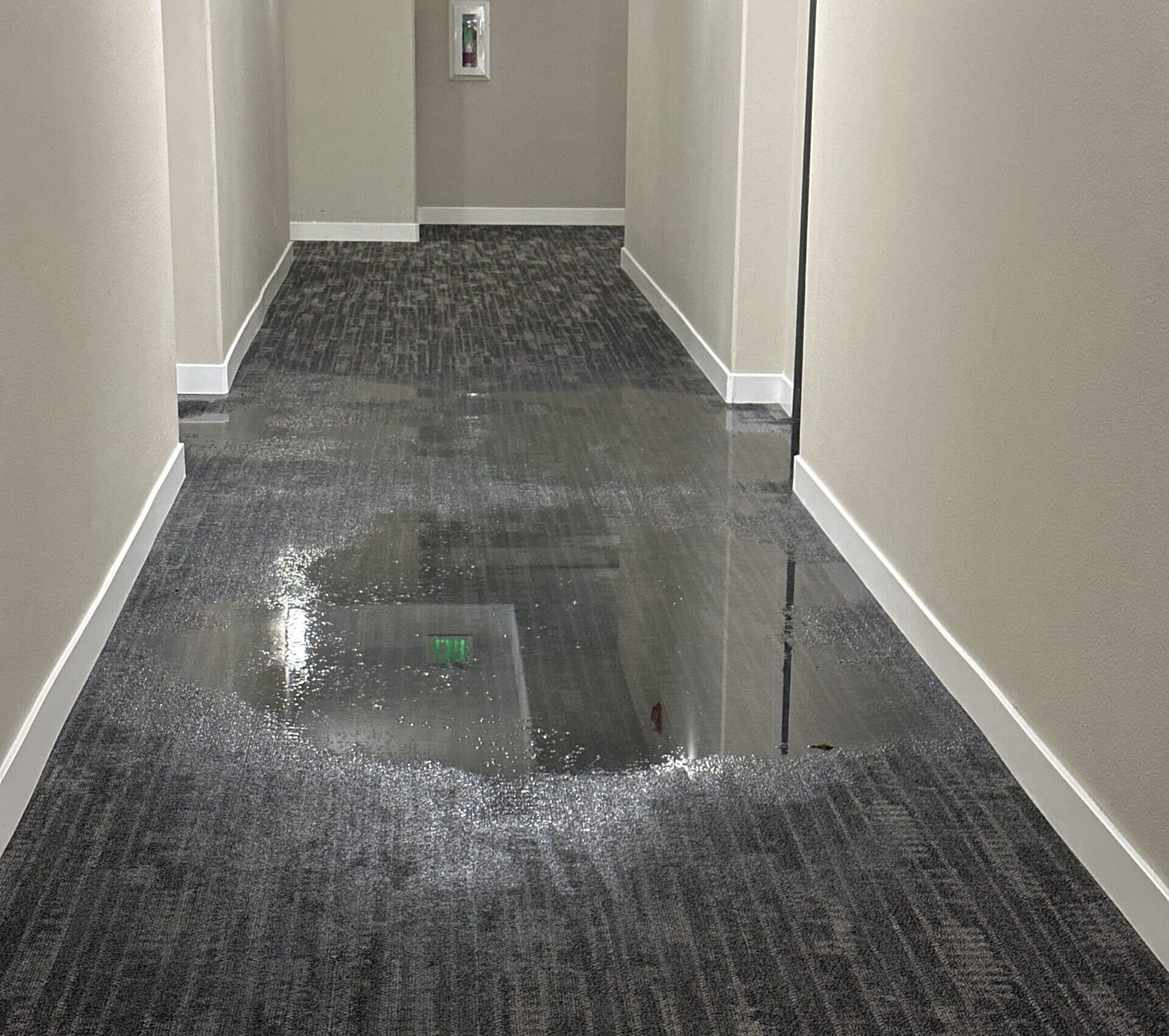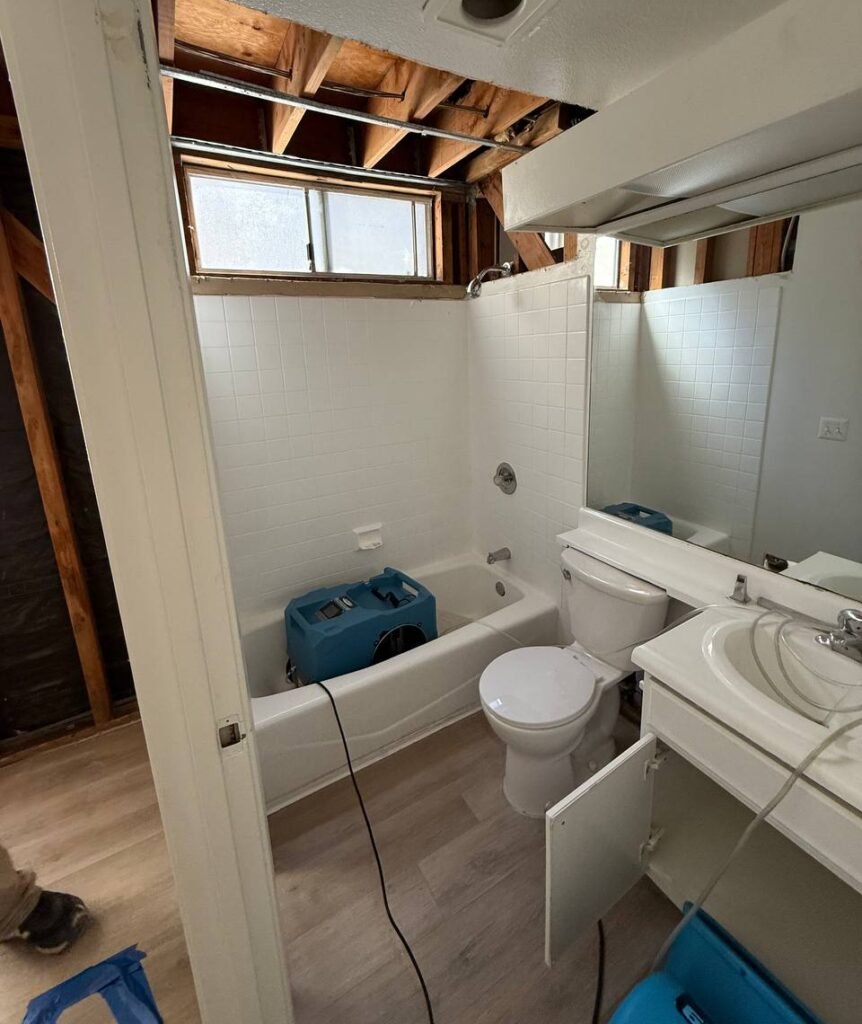Water Damage Restoration in Santa Monica, CA | 24/7 Cleanup & Drying
Santa Monica’s coastal microclimate keeps indoor humidity elevated. Marine layer, salty air, and wind-driven rain slow natural drying and push water into roofs, walls, and floors. From Ocean Park bungalows to North of Montana homes and Promenade-area condos, water spreads fast through plaster, hardwoods, and built-ins. Onsite Pro Restoration responds 24/7 with certified crews, commercial extractors, and an IICRC S500 process that limits loss, prevents mold, and speeds insurance approvals.
Get Started
Service Form
Why water damage happens here
Coastal weather and marine layer
Fog and ocean air hold RH high. Bathrooms, laundries, and tight utility rooms stay damp even without a visible leak. Once porous materials get wet, elevated RH slows evaporation and increases odor risk.
Roof decks, flat roofs, and parapets
Decks over living space are common from beach blocks to Mid-City. Scupper clogs, ponding, and membrane failures wet insulation and drywall below. Parapet and penetration details allow water to track laterally before it appears as ceiling stains.
Windows, stucco, and salt exposure
Wind-driven rain exploits hairline stucco cracks and older window assemblies. Salt accelerates corrosion at flashing and fasteners, opening micro-paths at sills and parapets. Moisture bypasses paper and wets sheathing and interior finishes.
Aging plumbing and compact floorplans
Galvanized or aging copper lines and worn angle stops fail in kitchens and laundry niches. Small footprints concentrate humidity and drive moisture into toe-kicks, base plates, and subfloors.
Multi-unit stacks and HOAs
Shared plumbing stacks and upstairs appliance overflows move water between units. Access rules and quiet hours require phased containment and clear documentation for boards and managers.
Mechanical rooms and HVAC condensate
Clogged condensate lines and pan overflows wet framing around air handlers. Restricted vents trap humidity in closets and chases.

Crawl spaces and landscaping
Irrigation against stucco and low airflow raise crawl-space humidity in Sunset Park and Pico neighborhoods. Negative grading near planters wets sill plates and lower walls after storms.
Our IICRC S500 water restoration process
Emergency response and scope
Live dispatch 24/7. On arrival, we secure the source and map wet materials with pin/pinless meters and thermal imaging. Scope aligns with S500 so you know what will be dried, opened, or removed. Lead/asbestos rules for pre-1978 materials are addressed before disturbance.
Rapid extraction
Truck-mounted and portable extractors pull standing water from tile, stone, hardwood, and carpet. We lift carpet and remove pads where needed. Baseboards or toe-kicks are pulled to relieve wet wall cavities and stop wicking.
Containment and protection
Poly containment with zipper access isolates rooms. HVAC supplies and returns in the zone are sealed. Paths get floor protection. In multi-unit corridors we stage equipment to minimize impact and meet HOA rules.
Structural drying to targets
Commercial dehumidifiers and air movers create a controlled system that removes vapor and drives moisture to the surface. Wall-cavity drying, floor tenting, and directed airflow bring materials back to target moisture content. We log baseline, daily, and clearance readings and share them with you and your insurer.
Cleaning and targeted antimicrobial
We clean salvageable non-porous and semi-porous surfaces. Targeted antimicrobial is applied where appropriate to reduce secondary microbial growth. No “spray-and-hope” shortcuts.
Monitoring, documentation, and handover
You receive photos, moisture maps, equipment logs, and an itemized Xactimate estimate. Insurer-formatted documentation reduces pushback and accelerates decisions. Final readings and a scope recap close the file.
Specialty care for coastal and historic finishes
Plaster retains moisture longer than drywall. We use lower-stress airflow and selective opening where readings demand. Historic casings, wainscot, and built-ins are protected and preserved when feasible. Superficial wetting may dry in place; delamination or deep saturation requires removal.
We deploy floor-drying mats and staged dehumidification to limit cupping and gapping. Engineered cores that swell are documented for replacement. Subfloors are verified dry before reinstall or refinish.
We manage vapor to limit efflorescence and staining. Non-destructive meters confirm drying beneath dense finishes. Where assemblies trap water, we plan minimal-impact relief points.
Toe-kick removal and cavity ventilation speed dry-down without full cabinet removal when structure allows. If panels or veneers delaminate, we document selective replacement while saving doors and faces where possible.
We remediate affected areas, clear condensate drains, and add float switches or leak alarms. Laundry exhausts are checked for proper exterior venting.

Insurance support for Santa Monica homeowners and managers
Xactimate estimates aligned with carrier formats.
Evidence package with photos, moisture logs, and scope notes.
Direct adjuster communication to reduce re-inspections and delays.
Most policies cover sudden and accidental water damage such as burst lines, appliance failures, or storm intrusions. Long-term leaks and maintenance issues may be limited. Our records tie cause, extent, and dry-down to policy terms.
Case study: roof-deck intrusion near Ocean Avenue
After a windy winter storm and a week of heavy marine layer, a two-story home a few blocks from Ocean Avenue developed ceiling stains below a roof deck. Moisture mapping found wet insulation and about 260 sq ft of affected drywall. A nearby bath fan terminated in the attic, holding RH high.
We built room containment with a HEPA negative-air machine, sealed registers, and protected floors and millwork. Saturated insulation and limited ceiling drywall were removed where readings required. Framing was HEPA-vacuumed, mechanically cleaned, and treated with targeted antimicrobial. Dehumidifiers and air movers established a closed drying system. Daily moisture logs were shared with the owner and insurer.
Dry goals were reached on day 4. Odor resolved by day 2 after source removal and cleaning. Roofing corrected the membrane and scupper detail. The bath exhaust was vented to exterior with a humidity-sensing fan. The claim approved without re-inspection due to complete documentation.
In coastal neighborhoods, membrane integrity and proper ventilation both matter. Fix one without the other and problems return.
Costs and variables (typical ranges, not a quote)
Actual pricing depends on size, materials, access, HOA or historic constraints, and verification needs:
Emergency response/site visit: often credited to work; stand-alone $0–$250.
Extraction: $0.30–$0.75 per sq ft based on volume and flooring.
Containment and protection: $150–$600 per chamber.
Equipment per day: air mover $25–$45; dehumidifier $75–$125; HEPA negative-air $95–$165.
Selective demolition (if needed): drywall removal/haul-off $2.50–$5.50 per sq ft; wet insulation removal $1.50–$3.50 per sq ft; baseboard or toe-kick remove/replace $6–$12 per linear ft.
Cleaning and antimicrobial: $0.20–$0.50 per sq ft treated.
Moisture monitoring/documentation: typically included within daily service lines.
We provide line-item scopes with photos and readings so you see what you are paying for and why.
Timeline you can expect
Inspection and extraction: same day.
Drying phase: typically 3–5 days depending on saturation, materials, and interior RH.
Documentation: updated daily and shared with you and your insurer.
Repairs: scheduled after targets are met. Typical scopes include drywall and texture, insulation, paint, flooring repair or replacement, and trim.
What to do before we arrive
Shut off the main water valve if safe.
Do not power wet circuits or fixtures.
Lift furniture onto blocks or foil.
Avoid opening bulging ceilings; saturated drywall can fail.
In pre-1978 buildings, do not disturb painted materials until lead/asbestos rules are addressed.
Prevention for Santa Monica homes and buildings
Roof and deck membranes: keep drains and scuppers clear; inspect seams and penetrations before storms.
Windows and stucco: seal cracks and maintain flashing; check sills after wind-driven rain.
Plumbing: replace aging angle stops and supply lines; install a pressure regulator if PSI is high.
Ventilation: vent baths and laundry to exterior; use humidity-sensing controls; improve make-up air in tight rooms.
Indoor RH control: hold about 40–50%; use portable dehumidifiers during fog-heavy weeks.
Crawl spaces and landscaping: redirect irrigation, maintain positive grading, and improve airflow.
Verification: after any leak, confirm target moisture before closing walls or refinishing floors.
We serve Santa Monica, Ocean Park, North of Montana, Sunset Park, Mid-City, and Pico, plus nearby Venice, Mar Vista, and Brentwood. Dispatch is 24/7, including weekends and holidays.
Related Santa Monica Services
Santa Monica Sewer Damage Cleanup
Biohazard and sewer cleanup.
Santa Monica Fire Damage Restoration
Fire and smoke cleanup and repairs.
Santa Monica Mold Remediation
Certified mold removal with free estimates.
Santa Monica Hub Page
Explore all services in Santa Monica
